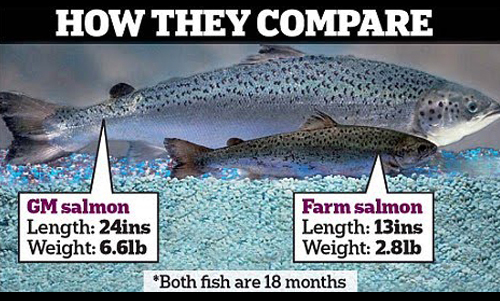Modern biotechnology techniques have been applied to produce GE Animals since 1982 when research for GE mice (first mammal) was initiated. GE fish research began in 1982 however, not until 32 years later did the first GE animal reach commercialization (GE Salmon approved in 2015). So why did it take so long for us to reach here….? #foodforthought
The GE animals debate has recently been ignited in Kenya. Regulators from National Biosafety Authority, Department of Veterinary Services, Kenya Wildlife Services among others are currently in discussions to forge a way forward on how to tackle this discourse in an effort to be more proactive. A workshop organized in Nairobi, Kenya brought together the various stakeholders to forge a way forward. My take home notes on the topic were as follows:
Why are animals being genetically engineered?
Genetic engineering of animals aims to modify specific characteristics of an animal or introduce a new trait, such as disease resistance or enhanced growth. Previously, scientists have sequenced the genomes of domestic animals, more is known about genes and the traits that they control. By finding genes that control beneficial traits, we are able to precisely introduce those genes into another animal’s genome, so the GE animal will possess that trait.
A game changer is now upcoming known as Gene Editing or Genome editing. This is a type of genetic engineering in which DNA is inserted, deleted, modified or replaced in the genome of a living organism. It is advantaged to be more precise, more flexible, enables multiple gene targets, its relatively inexpensive, easy and efficient and no “foreign” DNA controversies.
What animals are being genetically engineered globally?
In research studies, animals that have been safely genetically engineered include cattle, pigs, chickens, goats, sheep, dogs, cats, fish, rats, mice and mosquitoes. More specifically documented research for the following projects have been very successful:
- AquAdvantage salmon, became available in Canada in August 2017. The GE salmon is developed by AquaBounty Technologies to grow twice the size of non-GE salmon for the same growing period.

- GloFish (glowing fish) is another genetically engineered fish initially developed for pollution detection.
- Friendly™ Aedes mosquitoes launched in Brazil in April 2015. A 91% reduction in dengue fever cases was recorded in 2016. Dengue fever cases decreased to just 12 in 2015/2016, compared to the 133 cases in the previous year.
- Enviro-Pig™. Through genetic engineering, this animal emits 30 to 60 percent less phosphorus than traditional pigs fed the same conventional diet. This lessens livestock’s impact in the environment.
- U.K. scientists developed transgenic chickens that have resistance to the most devastating disease of birds and fowls, the bird flu (influenza). This technology has the potential to stop the global threat of bird flu in poultry production as well as in human health.
Is a GE animal an animal clone?
No. A GE animal has a deliberate modification made to its genome. In genetic engineering, scientists can precisely transfer a beneficial gene (for disease resistance, for example) from one animal species to another. Cloning technology is a type of breeding technology to produce an exact genetic copy of an animal – usually a high quality animal with desirable breeding traits.
Why regulate GE animal and their products in Kenya?
It is important that the technology is approved as safe for humans, animals and the environment. Essentially, the National Biosafety Authority working closely with several key regulatory agencies would be in charge of this mandate.
My conclusion: Let’s keep a close watch on this next frontier!
